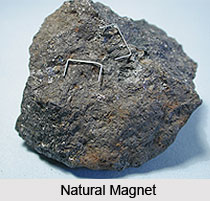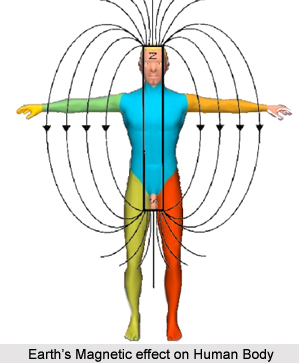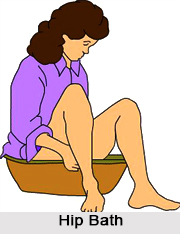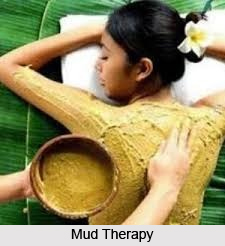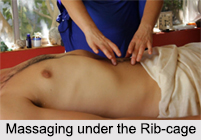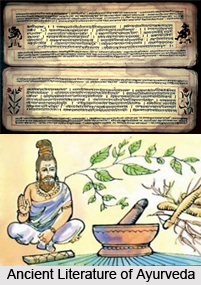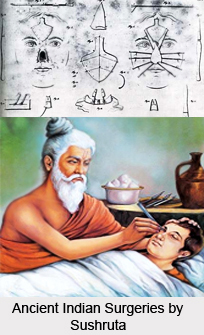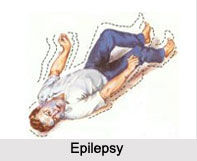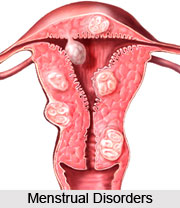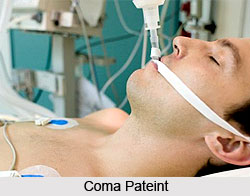 Coma is a state of profound unconsciousness, in which the sufferer cannot be aroused, and there are no reflex movements when the skin is pinched, the eyeball touched, and so on. The breathing is heavy, deep, and akin to snoring, but the heart`s function is normal.
Coma is a state of profound unconsciousness, in which the sufferer cannot be aroused, and there are no reflex movements when the skin is pinched, the eyeball touched, and so on. The breathing is heavy, deep, and akin to snoring, but the heart`s function is normal.
In medicine, a coma is a profound state of unconsciousness. A comatose patient cannot be awakened. He or she fails to respond normally to pain or light. They do not have sleep-wake cycles, and does not take voluntary actions. Coma may result from a variety of conditions, including intoxication, metabolic abnormalities, central nervous system diseases, acute neurologic injuries such as stroke, and hypoxia. It may also be deliberately induced by pharmaceutical agents in order to preserve higher brain function following another form of brain trauma. A coma may also result from huge head trauma caused by something like a car accident or a series of very severe concussions. The underlying cause of the coma is bilateral damage to the Reticular formation of the midbrain, which is important in regulating sleep.
Causes and Symptoms: Coma may be caused by high fever, diabetes mellitus, Bright`s disease, alcohol, epilepsy, cerebral tumour, meningitis, injury to the head, overdose of insulin, carbon monoxide poisoning, and poisoning with opium and other narcotic drugs. If the condition does not pass off in twenty-four hours, death generally ensues. There have been some cases where coma has continued for months, and, in some cases, for years before death intervened. Here ordinary cases of coma will be discussed in elaboration.
According to Ayurveda, vitiation of the three doshas depresses the cerebrum so as to produce coma, particularly, in a weak person. An ordinary fit of fainting may subside and the sufferer may feel all right after some time, but coma has to be dealt with by an experienced physician. Some cases of coma may be due to thrombosis, compression, concussion that is produced by a blow to the head, cirrhosis of the liver, cerebral malaria, or hypertension.
Medicines & Prescriptions: A comatose person should be revived by strong stimulants. Kevanch Phali may be rubbed on his body to revive him. After that, the patient should be laid in a darkened room. If the blood pressure is abnormally high, the patient may be bled. Loss of 400 to 500 ml of blood is sure to bring down the pressure. If the coma is due to diabetes mellitus, efforts should be directed towards reducing the amount of sugar present in the blood. The patient should be kept on a restricted diet for a couple of days and be given only liquids while his blood sugar is being monitored.
Any of the following medicines, singly or in combination, may be used to prevent another attack of coma. The names can be mentioned as
1. Murchhantaka Rasa: Yogendra Rasa; Pravalapishti; Shankhapushpi Churna: 120 mg each of Murchhantaka Rasa and Yogendra Rasa, 240 mg of Pravalapishti and 500 mg Shankhapushpi Churna to be taken thrice daily with honey and cow`s ghee.
2. Mahakalyanaka Ghrita: 12 gm to be taken with cow`s milk at breakfast.
3. Ashwagandharishta: 20 ml to be taken after meals with water, twice daily.
4. Shri Gopal Taila: Shatavari Taila: 3 gm of Shri Gopal Taila Shatavari Taila and 6 gm of should be used for massage of the head and body.
Diet and Other Regimen: An easily digestible diet is recommended. Among other criteria patients are advised to lead a restful life in pleasant surroundings. constipation should not be developed among the patients. Violent exercise, worry, and mental strain are to be avoided. Pleasant companionship, music, and other forms of entertainment have therapeutic value in such cases.





